
Veterinary Telemedicine: A New Frontier in Animal Welfare

Safe and convenient, virtual veterinary care holds tremendous potential to protect pets and improve animal welfare. Telemedicine can remove barriers to veterinary care, keep pets in loving homes, prevent unnecessary pet stress and alleviate animal suffering — but we must ensure that outdated laws do not create unnecessary roadblocks for the appropriate use of veterinary telemedicine.
It is essential that licensed veterinarians be legally and professionally empowered to determine when to use telemedicine in the practice of veterinary medicine. When used responsibly and effectively, telemedicine has the potential to significantly reduce animal suffering, alleviate financial and logistical barriers to veterinary care, improve pet retention and extend the capacity of animal shelters to serve animals and their communities. Given the many potential benefits of expanded access to veterinary telemedicine, the ASPCA believes it is imperative that the legal limitations to telemedicine access be lifted and this critical tool be normalized and available for veterinarians to use without red tape or liability.
Would You Benefit from Virtual Veterinary Care?
If you answered “yes” to any of these questions, you probably understand how beneficial access to veterinary telemedicine could be for pets and the people who care for them.
Telemedicine, or virtual veterinary care, is the delivery of healthcare services through remote telecommunications technology, like video calls through apps like FaceTime® or Zoom. Telemedicine has already become a mainstream mode of human healthcare delivery, safely and conveniently connecting more people with medical professionals. This technology works for people, and it works for pets as well, expanding access to veterinary care for pet owners across the geographic and economic spectrum. It is already a productive method of care in many contexts and needs to be a more widely available tool in animal medicine.

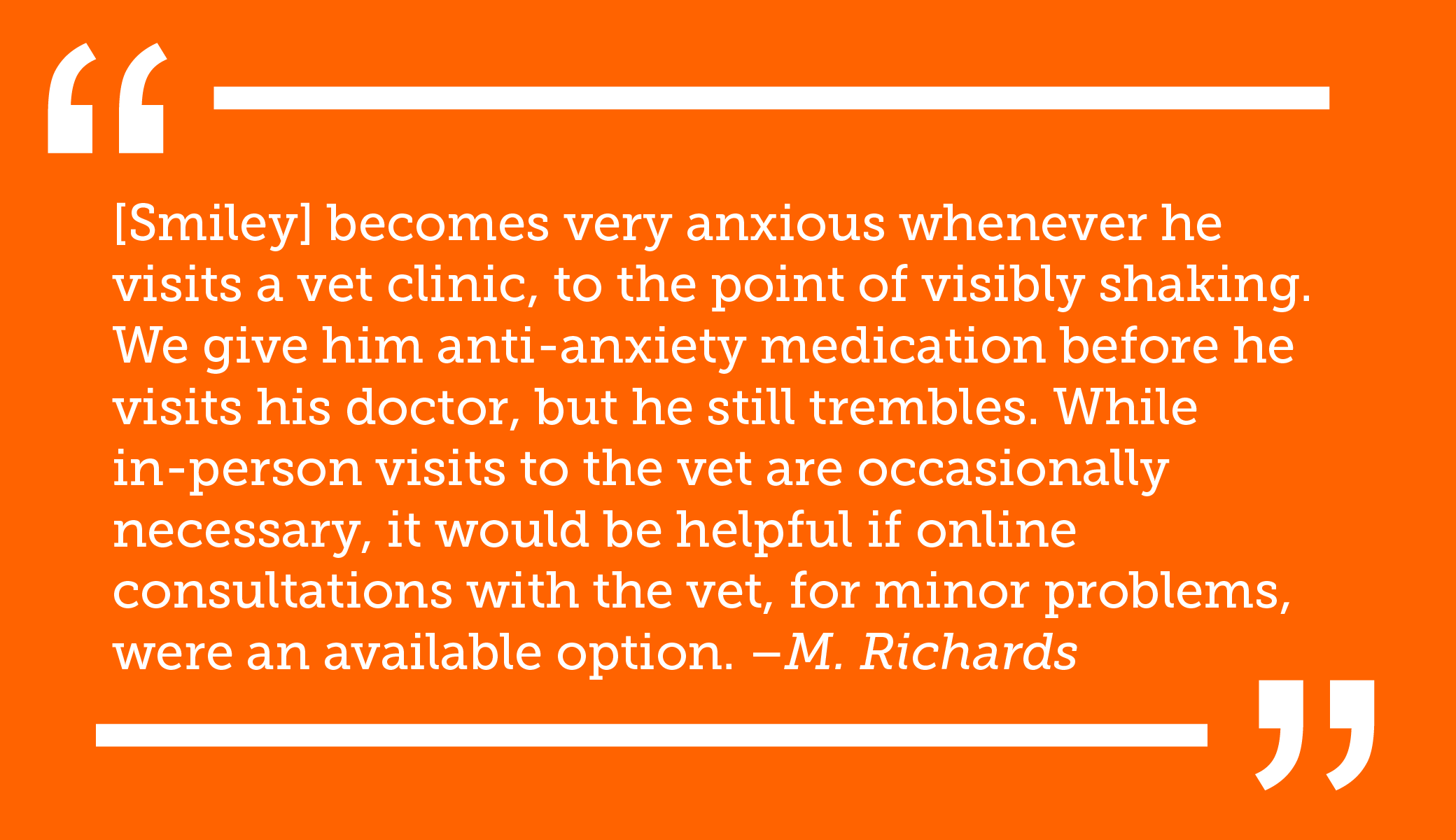
Opening Doors to Virtual Veterinary Care
Telemedicine offers a lifeline to pet owners who face financial, geographic or logistical obstacles to accessing veterinary care. Research shows that at least one-third of pets in the U.S. do not see a veterinarian regularly, and one out of every four pet owners faces significant obstacles to obtaining veterinary care for their pets, such as their own health, finances, transportation, or because they live in rural or urban communities that are underserved by veterinarians. These barriers, especially when combined, can force even the most committed pet owners to make heartbreaking decisions to forego veterinary care — which can lead to needless animal suffering — or to rehome their pets.
Telemedicine can expand access to care for large animals, animals who are difficult to transport, or animals with behavioral challenges. By giving pet owners options, virtual veterinary care opens more doors to the veterinary healthcare system. It can help people who otherwise may be unable to access in-person care for their pets, connecting more pet owners with veterinarians and keeping more pets in their loving homes — and out of overburdened animal shelters.

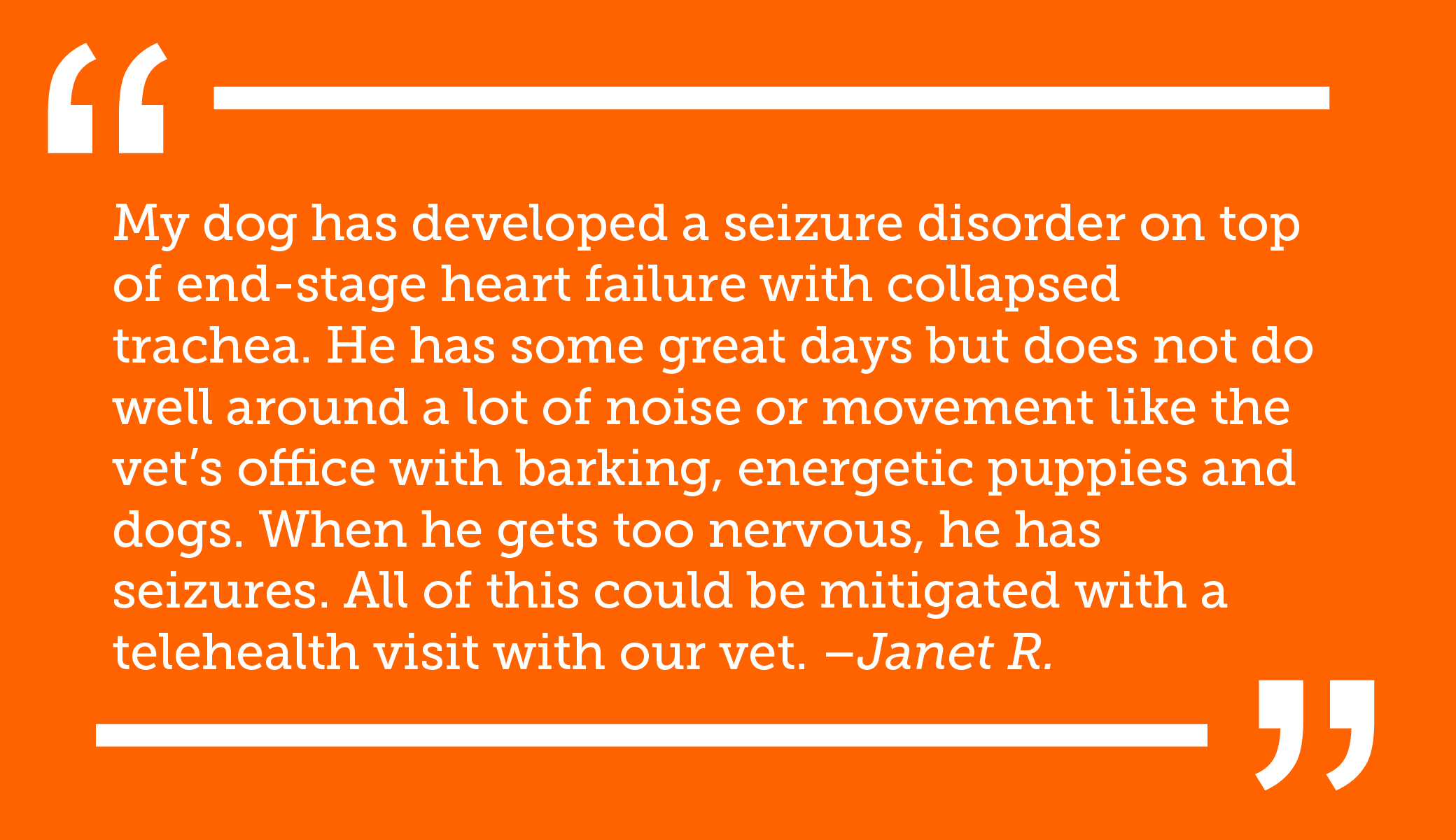
Reducing Pet Fear and Stress
Many dogs and cats experience fear, anxiety or stress during clinical veterinary examinations. Research shows that pets can become so frightened at the vet’s office that they will not enter exam rooms willingly and must be physically carried or dragged. Dogs and cats are sometimes separated from their owners for medical exams, which can cause the pet even greater stress. Owners of fearful pets may postpone or forego clinic visits because they wish to avoid causing their pet undue stress.
Telemedicine can enable owners of anxious pets to access veterinary care from the pet’s comfortable home environment — no clinic visit needed, unless the veterinarian determines the pet needs to be examined in a clinic. When a licensed veterinarian believes they can gather sufficient physical, behavioral or other data via telemedicine to safely diagnose and treat a pet’s ailment, pet owners can spare their anxious pets the stress of an unnecessary clinic visit while obtaining the veterinary care their pet may otherwise not receive. For the times when pets must be transported to a clinic, telehealth-generated prescriptions for pre-visit medications may reduce the stress that pets would otherwise experience during their trip to a clinic.
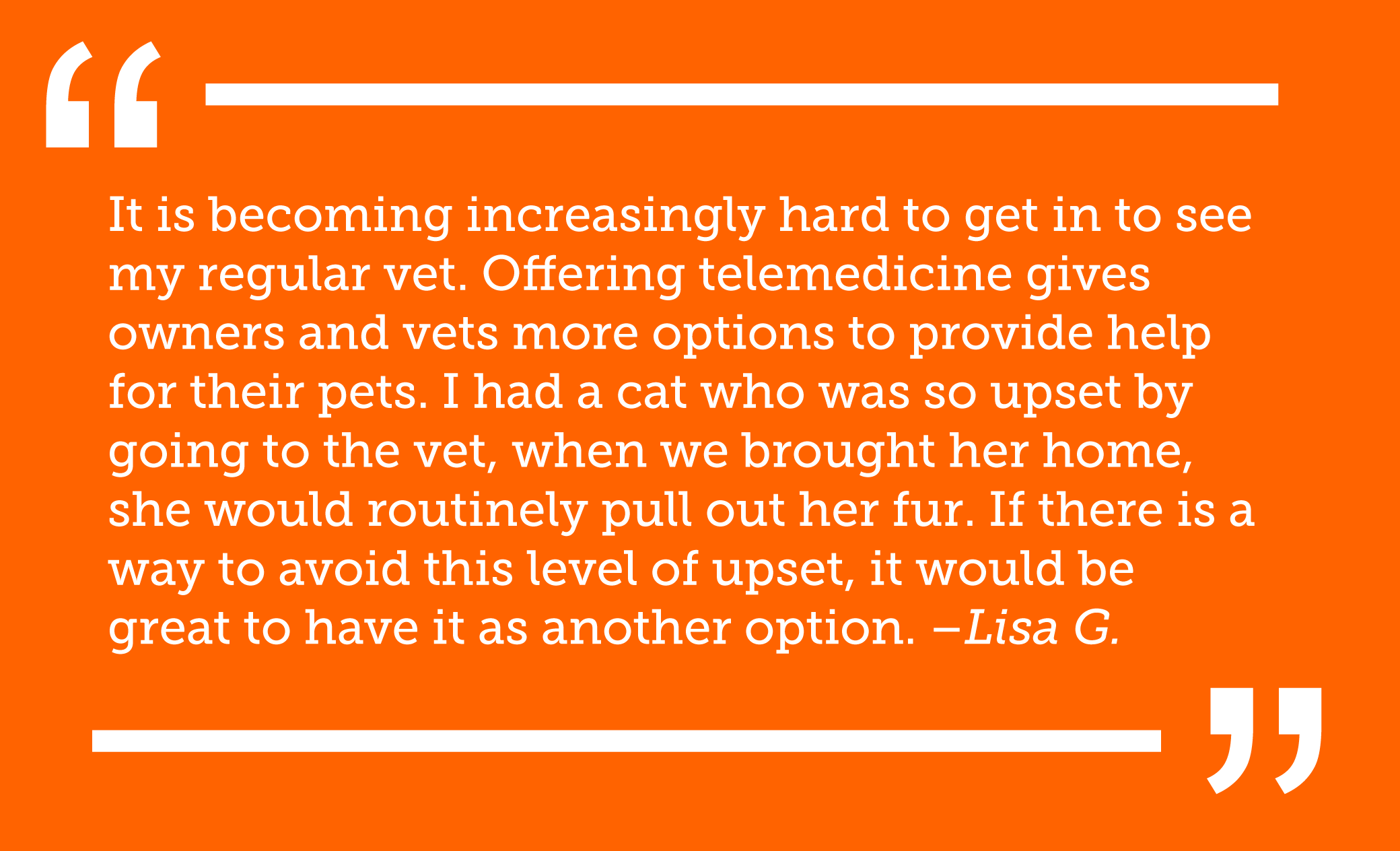
Virtual Hospice Care Can Provide a Peaceful End-of-Life for Pets
Toward the end of a pet’s life, many pet owners ask themselves the heartbreaking question, “Is it time to say goodbye?” So many of us consider our pets to be family members, and as they age, we want to know if they still have a good quality of life, how to prevent or alleviate their suffering, and how we can help provide our pets with a peaceful passing when it’s time. Virtual veterinary hospice care can support pet owners through these difficult moments and help them understand the nature and progression of their pet’s disease, reduce unnecessary clinic visits, minimize stress and make informed decisions at the end of their pet’s life.
Veterinary hospice specialists can review medical records before a consultation and use telemedicine to observe a pet’s movement and behavior while the pet remains in their familiar home environment, obtaining important data about the pet’s quality of life that they can use to expertly advise clients on end-of-life decisions. Where legal, veterinary hospice providers may use telemedicine to prescribe medication that can reduce a pet’s physical pain or discomfort. As an extension of virtual veterinary hospice care, hospice providers may also offer in-home euthanasia services. A hospice veterinarian can use telemedicine to meet with the family before a scheduled euthanasia to discuss the procedure and the family’s preferences, ensuring that when it is time to say goodbye, the process is peaceful for the entire family.

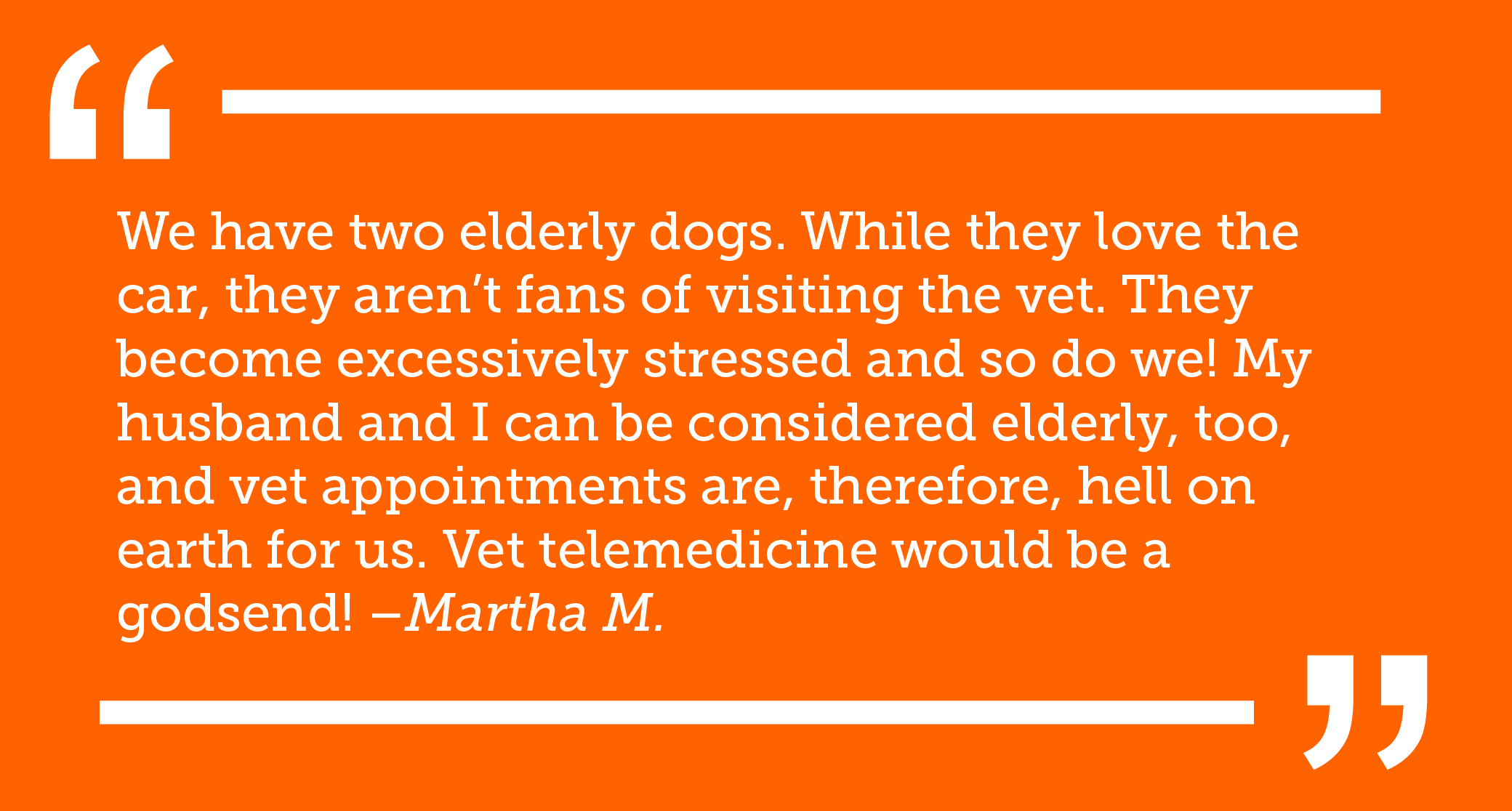
It's Time to Remove Legal Barriers to Veterinary Telemedicine
Pets and the people who love them deserve access to safe, convenient veterinary telemedicine. For those who face serious barriers to care, telemedicine could mean the difference between affordable access to care or no care at all. The benefits of telemedicine are clear — it’s simply unconscionable that outdated laws continue to block access to virtual veterinary care for many pet owners.
While federal and state laws have expanded access to telemedicine for people, access to telemedicine care for pets remains limited. Its growth is obstructed by antiquated laws that require veterinarians to examine animals in person before they can treat animals. In recent years, some states have taken the initiative to update their laws to provide better access to virtual veterinary care, but we still have work to do to change veterinary laws across the country before telemedicine will be broadly available.
Veterinarians should be trusted to determine when telemedicine is appropriate and to use it as broadly as appropriate to provide the most effective care possible for their patients. It’s time to change these laws to remove obsolete, arbitrary physical examination requirements that block access to veterinary telehealth. By doing so, we can open more doors to virtual veterinary care and elevate animal welfare.

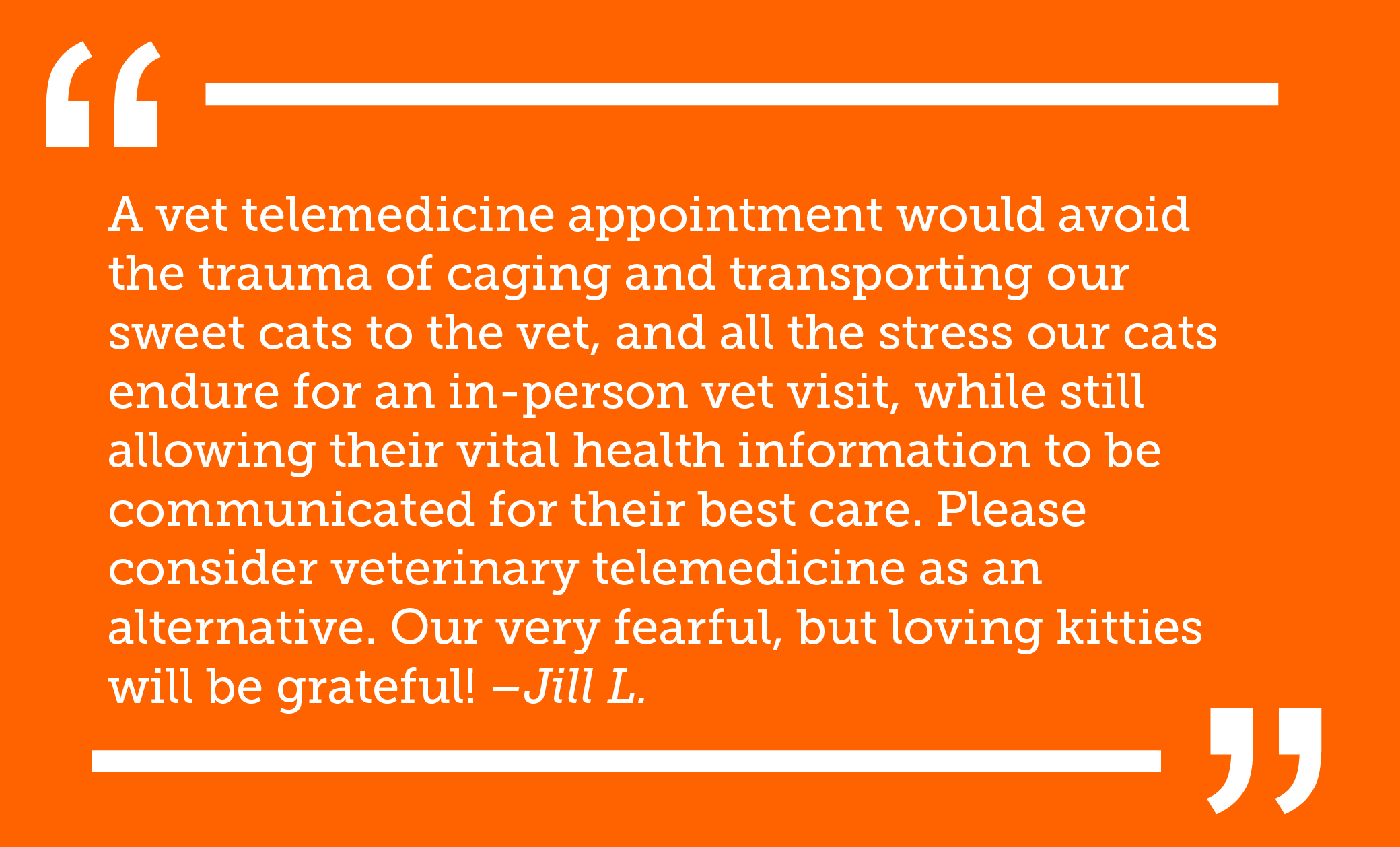
What You Can Do
Visit our Advocacy Center to see if there’s a current, actionable veterinary telemedicine bill in your state. You can also join the ASPCA Advocacy Brigade to receive customized emails alerting you to the introduction and progress of future bills.
The Veterinarian Shortage & Telemedicine
The veterinary industry is experiencing a critical shortage of veterinarians and other professionals in the workforce — there simply aren’t enough veterinary professionals to care for all the animals in need. Experts predict that veterinary shortage situation could become even more dire in the coming years. By diverting non-urgent or routine cases to telehealth, virtual veterinary care can help bridge gaps in care exacerbated by workforce shortages.

